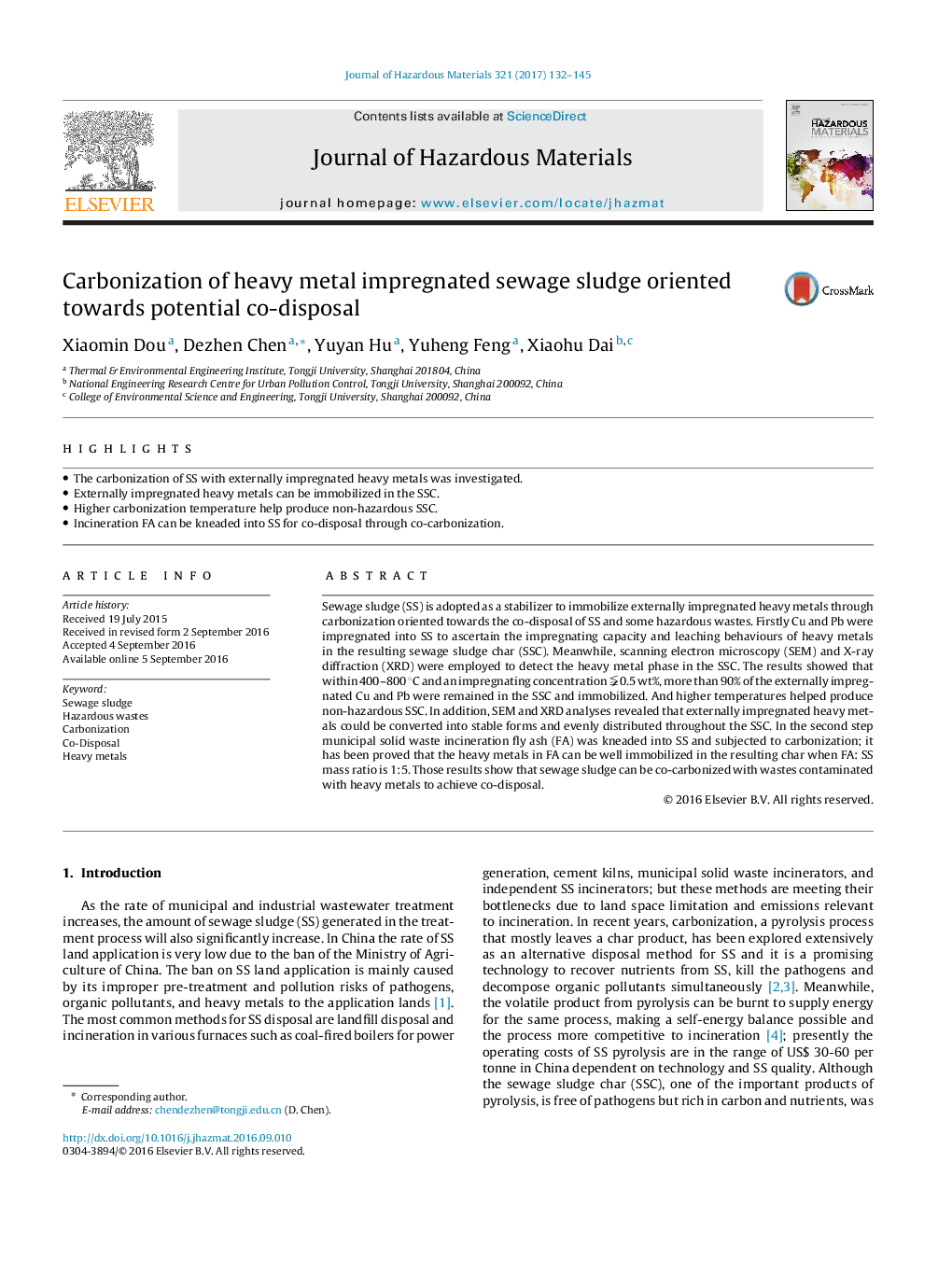| Article ID | Journal | Published Year | Pages | File Type |
|---|---|---|---|---|
| 4980037 | Journal of Hazardous Materials | 2017 | 14 Pages |
Abstract
Sewage sludge (SS) is adopted as a stabilizer to immobilize externally impregnated heavy metals through carbonization oriented towards the co-disposal of SS and some hazardous wastes. Firstly Cu and Pb were impregnated into SS to ascertain the impregnating capacity and leaching behaviours of heavy metals in the resulting sewage sludge char (SSC). Meanwhile, scanning electron microscopy (SEM) and X-ray diffraction (XRD) were employed to detect the heavy metal phase in the SSC. The results showed that within 400-800 °C and an impregnating concentration â¨0.5 wt%, more than 90% of the externally impregnated Cu and Pb were remained in the SSC and immobilized. And higher temperatures helped produce non-hazardous SSC. In addition, SEM and XRD analyses revealed that externally impregnated heavy metals could be converted into stable forms and evenly distributed throughout the SSC. In the second step municipal solid waste incineration fly ash (FA) was kneaded into SS and subjected to carbonization; it has been proved that the heavy metals in FA can be well immobilized in the resulting char when FA: SS mass ratio is 1:5. Those results show that sewage sludge can be co-carbonized with wastes contaminated with heavy metals to achieve co-disposal.
Related Topics
Physical Sciences and Engineering
Chemical Engineering
Chemical Health and Safety
Authors
Xiaomin Dou, Dezhen Chen, Yuyan Hu, Yuheng Feng, Xiaohu Dai,
